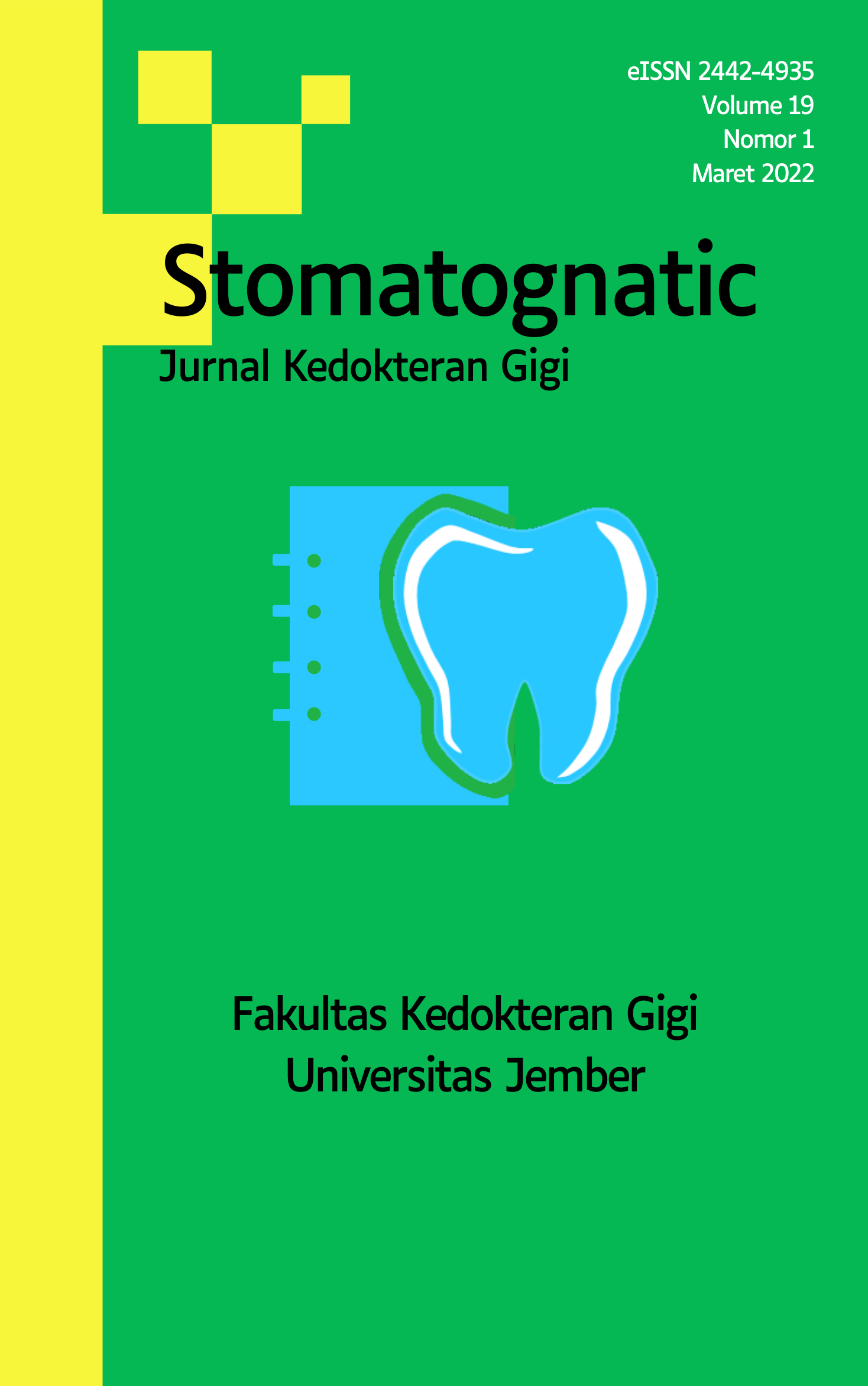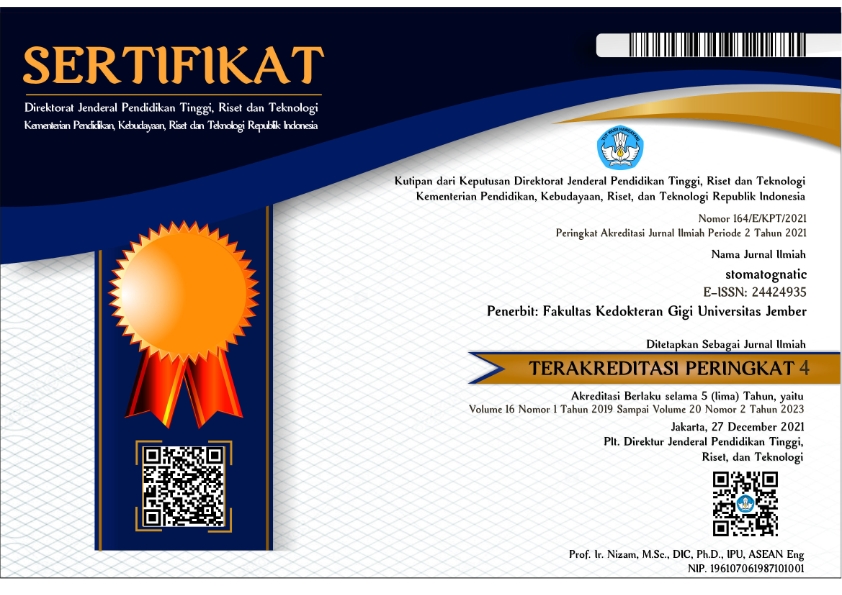Prakiraan Usia Gigi Menggunakan Standar Blenkin (Modifikasi Metode Demirjian) pada Anak Penderita Down Syndrome
Abstract
Age has an important role in the forensic identification process. Age estimation need to be done accurately in determining a person's age. The use of the Blenkin standard as a method of age estimation to the Javanese population produces accurate results. Chronological age estimation can be known through the dental age which is largely controlled by genetic factors. One of the genetic disorders that is associated as one of the causes of delayed development and eruption of teeth is Down Syndrome. The manifestation of Down syndrome in children's teeth is the delay in the timing and sequence of tooth eruption. The purpose of this study was to assess dental age estimates using the Blenkin standard (modified Demirjian method) in children with Down syndrome. This study is a cross-sectional study using children with Down Syndrome as research subjects, aged 10-16 years and willing to sign an informed consent for further panoramic x-rays. The results of the panoramic X-ray are then assessed using the Blenkin Standard for age estimation. The results showed that the dental age was different from the chronological age, which was 2.8 years for the sample of boys with Down Syndrome and 0.72 years for the sample of girls with Down Syndrome.








